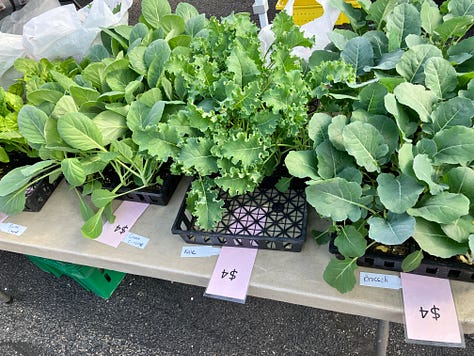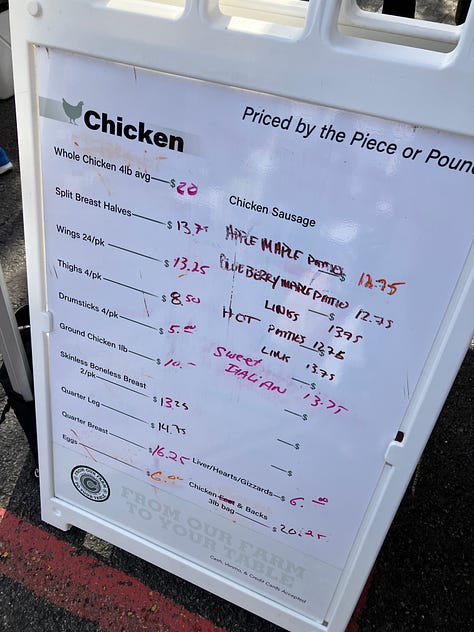Health Homework (25) Enjoy and support your local farmers market
You survived the winter and paid your taxes, so might as well get out and enjoy
In the United States, food typically travels 2,000 miles from farm to table—the implications include
MECHANISATION, WITH CHEMICALS: most of the food is produced in massive corporate farms, nearly all of which maximize use of chemical pesticides to “maximize yields” and maximize profits,
DISTRIBUTION VULNERABILITY: social fragility because any increase in fuel prices or any problems with infrastructure (eg, train wreck) can lead to higher food prices or food scarcity,
CONCENTRATION OF WEALTH: local economies are starved while mega-farms make profit,
VULNERABILITY TO ATTACK: mega-farms are vulnerable to disease outbreaks and “terrorist”-like attacks,
LESS NUTRITION: food is picked earlier, travels farther, and arrives with fewer nutrients,
MONO-CROPPING: Corporate mega-farms always use only one variety of crop in order to produce a consistent single product; small local farms are more likely to have a mix of plant varieties and are more likely to use and safe heirloom seeds thereby providing more variety with less vulnerability to mono-crop failure,
etc.
Among all of the countries and continents where I have lived, all of them had brutally hard winters—supremely unusual weather patterns, political unrest, mass shootings (in the USA) and of course the ever-unfolding globalist agenda.
This morning we went to local farmers market and purchased local honey, four varieties of tomato plants, cilantro plants and a few other food plants, Mediterranean food, local coffee, farm eggs and chicken, and a few flowering plants for the garden (planter boxes).



Want to have fun and frustrate the globalists? Then support your local farmers market…and pay cash
No matter where you live, you can support your local economy by supporting your local farmers. This also reduces social fragility, which is perfectly exemplified by the over-reliance on corporate farming and the need for long-distance transport of food.
The typical item of “real food” in the United States is produced on a corporate farm and then has to travel more than 1000 miles to reach its market—worse is that 70% of the consumed food in the United States isn’t even real food but rather is ultra-processed ultra-refined manufactured food-like products, literally designed to create addiction and obesity. In the United States, food typically travels 2,000 miles from farm to table.1
In the United States, food now travels between 1,500 and 2,500 miles from farm to table, as much as 25 percent farther than two decades ago. http://www.cropchoice.com/leadstry4fe2.html?recid=1147





